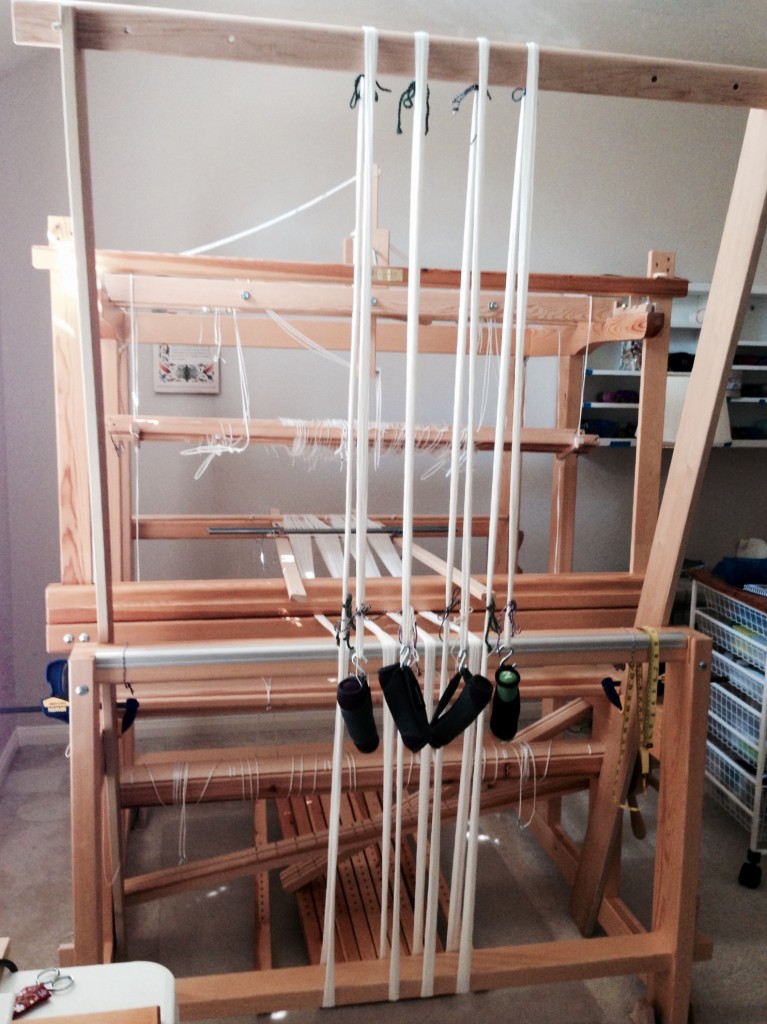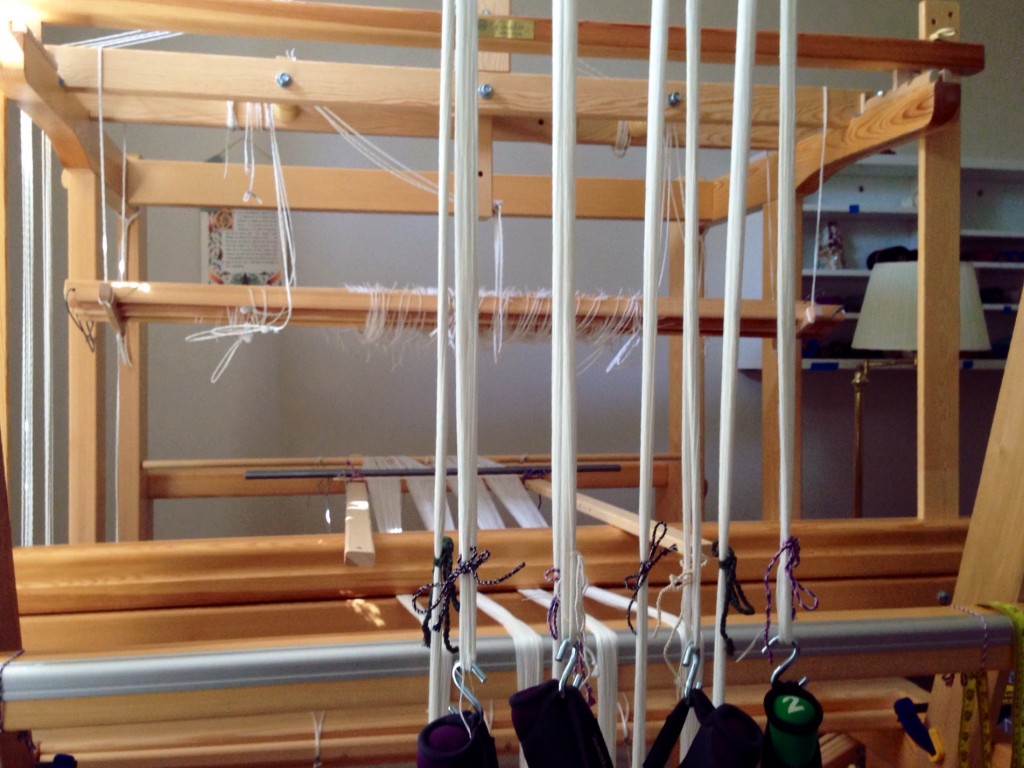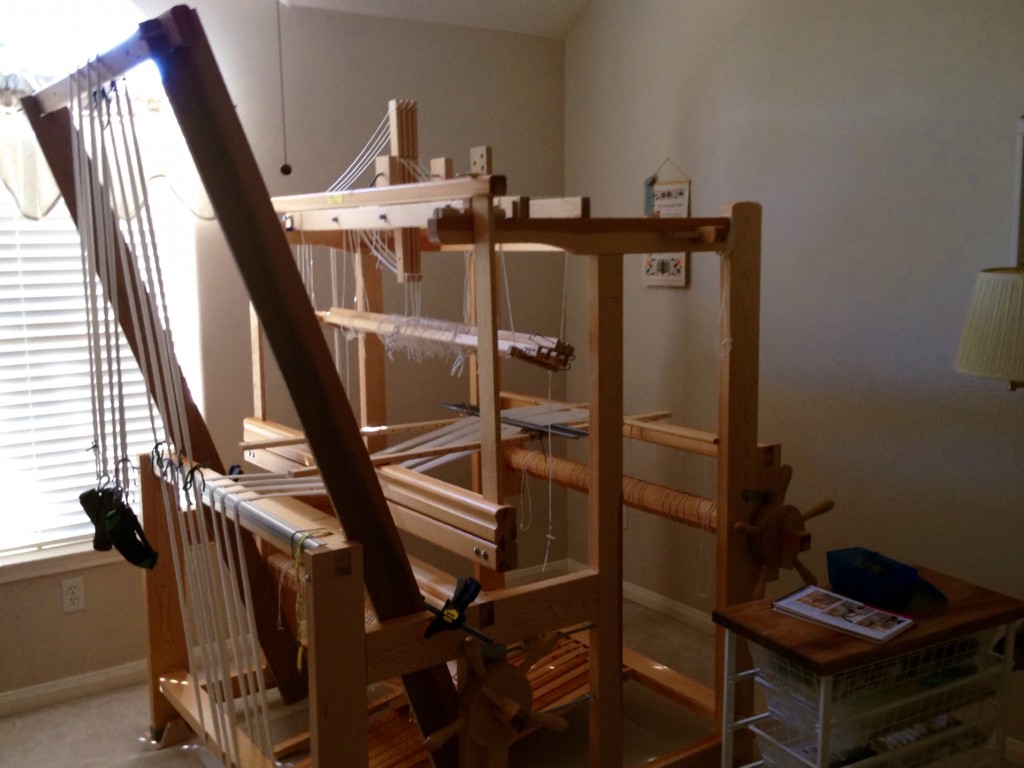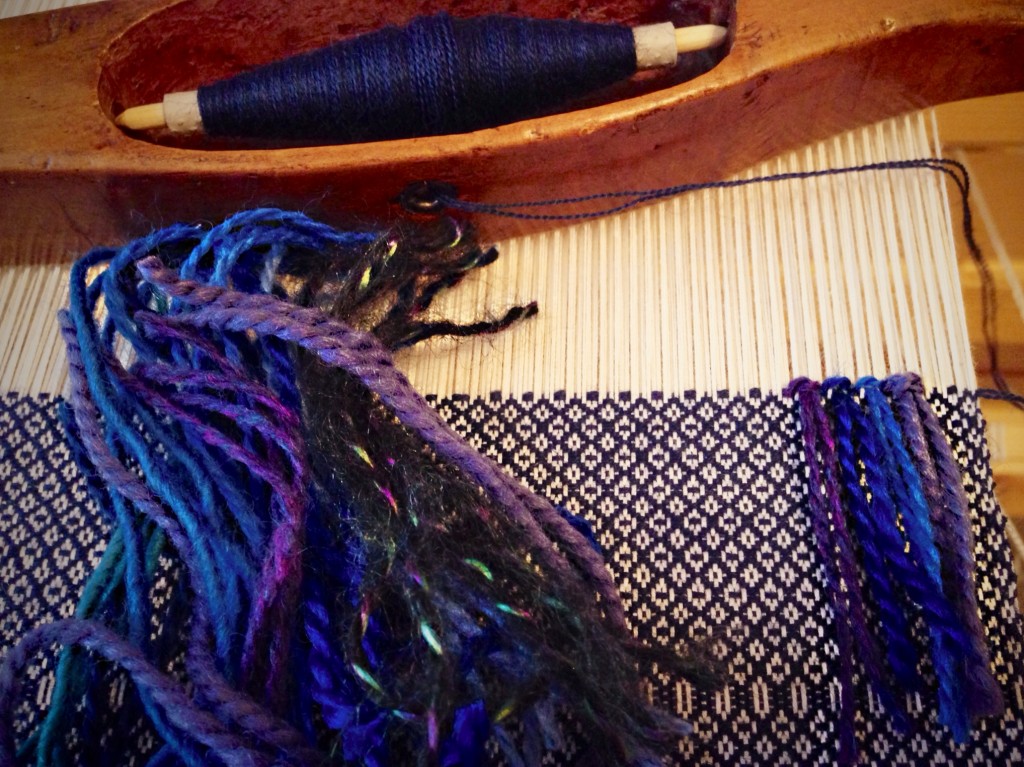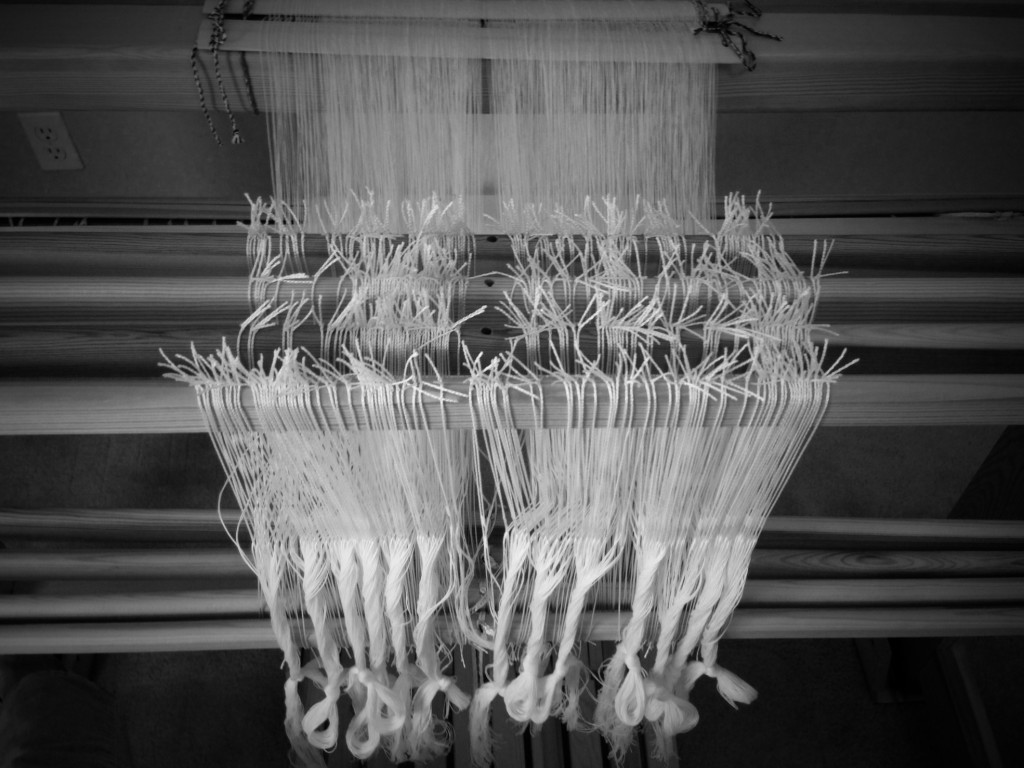With nine shades of blue, four shades of gold, and mixed strands of white / grey / lavender, in various weights of wool, the rya is a tactile and visual delight. There is a lovely surprise under the shaggy rya tendrils that you will not see unless you spread the strands apart and peer down to the cloth. The wool background weft forms a delicate repeating pattern underneath. And that hidden ground weft is the very thing that secures every tedious row of hand-tied rya knots. Like the background weft, when we choose to build others up, we weave a lasting foundation into our relationships.
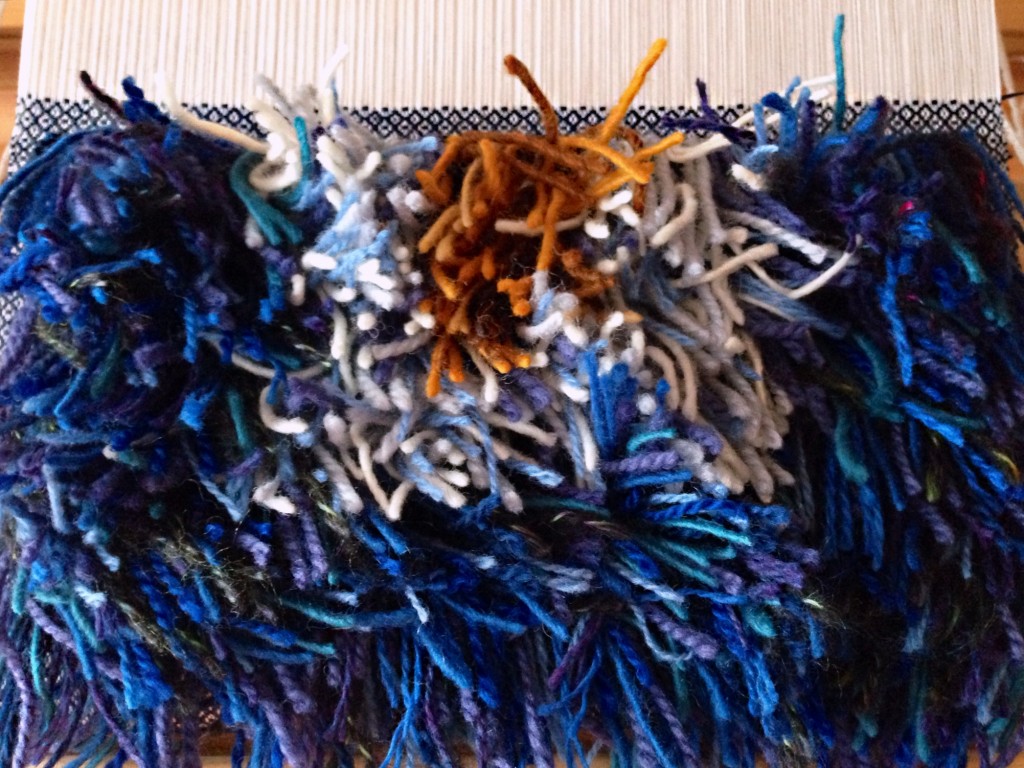
Sure, more knowledge and experience improves my skills. Skills that I can show off. Knowledge without love is a danger zone, though, that leads to arrogance. I can puff up myself through knowledge, or I can build up others through love. Wouldn’t we rather be the background weft that allows the rya to stand out? Our knowledge, with love as the operating system, has the capability of building up others. What love builds, lasts.
(More thoughts about rya knots, and love as an operating system HERE.)
May you find your place in the background.
Truly yours,
Karen

